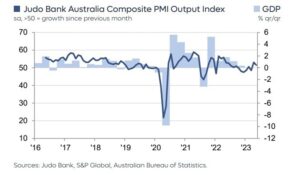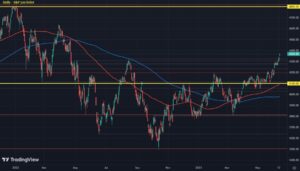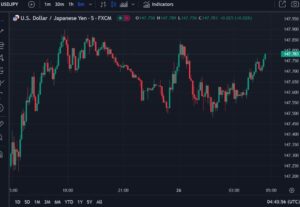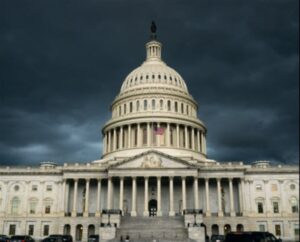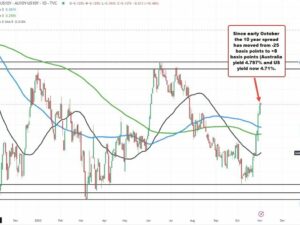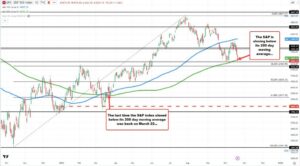
- Sun: New Zealand Trade Balance
- Mon: Japanese Unemployment (Dec)
- Tue: Israel Municipal Elections; Spanish Flash CPI (Jan), Swiss KOF (Jan), German Flash GDP (Q4), EZ Flash GDP (Q4), EZ Consumer Confidence Final (Dec), US Home Prices (Nov), JOLTS (Dec), Japanese Retail Sales (Dec)
- Wed: Australian CPI, FOMC & BCB Policy Announcements, BoJ SOO (Jan); Chinese NBS PMIS (Jan), German Flash CPI (Jan), German Retail Sales (Dec), Import Prices (Dec), French Prelim. CPI (Jan), German Unemployment (Jan), EZ GDP Flash Prelim. (Q4), US ADP (Jan) and Employment Cost Index (Q4), Chicago PMI (Jan), Italian Prelim. PCI (Jan)
- Thu: Chinese Caixin Manufacturing PMI (Jan), EZ/UK/US Manufacturing PMI Finals (Jan), EZ Flash CPI (Jan), BoE Announcement, ISM Manufacturing PMI (Jan).
- Fri: US Jobs Report (Jan)
Note: Previews are listed in day order
New Zealand Trade Balance (Sun)
There are currently no expectations for the New Zealand data. In last month’s release, the M/M trade deficit narrowed from NZD 1.7bln to NZD 1.2bln – largely in line with expectations, whilst Exports fell by over 5% Y/Y to NZD 5.99bln and imports contracted 15% Y/Y to NZD 7.23bln. The month saw a significant contraction in trade volumes with China, with exports to China falling by -9.7% Y/Y while Imports declined by 17% Y/Y. Analysts at Westpac believe that a smaller deficit for December is likely, reflective of a seasonal pickup in exports.
Australian Retail Sales (Tue)
December Retail Sales data is expected to print at -2.0% vs. +2.0% in November. November saw a stronger-than-expected 2% increase, contrasting with the choppy performance in September-October and a modest annual growth of 2.2%. The rise in November sales was partly attributed to changing seasonal trends, with more spending during 'Black Friday' and 'Cyber-week' sales periods. The Australian Bureau of Statistics (ABS) noted a significant increase in November seasonality over the last decade. For December, a decline in retail sales is anticipated, estimated at 0.5%, as per Westpac Card Tracker data. This decline is attributed to uneven spending during the Christmas period and weak underlying momentum, despite consumers taking advantage of sales discounts.
Australian CPI (Wed)
The quarterly and monthly CPI data will be in focus at the RBA. The monthly CPI Indicator, though not a precise monthly measure of CPI (as it aggregates various price survey data throughout the quarter), is vital for updating desks’ quarterly CPI forecasts. Markets expect the Y/Y metric at 3.7% whilst Westpac predicts a 3.0% rise. Q4 CPI meanwhile is anticipated to show a quarterly increase of 0.8% (prev. 1.2%) and an annual rise of 4.3% (prev. 5.4%) – slightly under the RBA’s 4.5% projection. The Trimmed Mean, or “core”, is seen at 0.9% for the quarter and 4.4% annually, marginally beneath the RBA's 4.5% forecast. Westpac said “Our forecast for inflation is consistent with our current view that the RBA will remain on hold at the February meeting and that the RBA will be reducing the cash rate at the September meeting later this year."
UST Quarterly Refunding Announcement (Wed)
Bank of America thinks the Treasury will deliver a repeat of the increase in auction sizes that it announced in November, where the Treasury suggested that a final increase would be needed for issuance to align with financing needs. "This would mark the third consecutive quarterly increase in coupon supply since the August refunding," BofA writes, "we see room for Treasury to continue growing coupon supply in 2025-2026, but expect it to hold off on further adjustments this year given uncertainty around QT and deficits." BofA also argues that the Treasury might prefer to delay further coupon increases given the perception of market sensitivity to supply announcements, and a desire to refrain from tightening financial conditions in an election year. In terms of the details, BofA says that while it is not the base case, there is potential for Treasury to deliver larger back-end supply next week than in November given that it delivered a lower increase at the 10yr and 30yr points vs its expectations and what the TBAC had recommended, a decision BofA thinks was driven by concern about the demand backdrop and sharp increase in term premium from August to October.
FOMC Announcement (Wed)
The FOMC is set to keep rates unchanged at 5.25-5.50% at its January meeting, according to all economists surveyed by Reuters. The central bank is expected to begin cutting rates in Q2 in response to cooling inflation, according to 86 of 123 surveyed (55 thought June was more likely, while 31 see a reduction in May). Additionally, the Reuters poll reveals that most economists (72 of the 123) believe the Fed will cut rates by 100bps or fewer this year - that compares to money market pricing, which currently sees five 25bps rate cuts fully priced, with a good chance of a sixth; the Fed's own forecasts see three 25bps rate cuts this year. "We still expect the Committee to maintain a cautious stance in the near-term even amid an increasingly improving profile for consumer prices, as the Fed would like to ascertain that the recent progress in inflation is sustainable," TD Securities said.
BCB Announcement (Wed)
The BCB is expected to fire its fifth rate cut of the current easing cycle, reducing rates by 50bps to 11.25%. Analysts continue to see further rate reductions this year, with the weekly central bank poll of private economists seeing the Selic falling to 9.00% this year, before easing a little further to 8.50% in 2025. However, Capital Economics suggests that "with inflation set to remain above target, fiscal risks likely to flare up again and the labour market only loosening gradually, we think interest rates will be lowered more cautiously than most currently expect (it sees the end-2024 Selic rate at 9.50%)."
Chinese NBS PMI (Wed)/Caixin Manufacturing PMI (Thu)
Chinese PMI data will be closely watched to gauge the health of the Chinese recovery, although it is unclear if the survey period will encapsulate the latest RRR cut announced by the PBoC which unleashes some CNY 1tln in liquidity. There are currently no forecasts for the metrics. In December, the Manufacturing metrics from NBS and Caixin diverted, with the official government PMI indicating a continued contraction (at 49.0), while the Caixin Global report suggested a slight growth (at 50.4), although the latter is known to be more volatile than the NBS metric. Sentiment in China has been downbeat for most of this month with the slew of measures announced last year largely overlooked by investors, although the RRR cut announced on Wednesday likely lifted investor sentiment on China off lows. Analysts at JP Morgan expect China can maintain its recovery momentum into H1 2024, before moderating to trend growth in H2 2024. JPM says deflation will end in 2024, benefiting from the changing dynamics in global commodity prices. However, the desk suggests low inflation will persist amid biased policy support for production vs. consumption.
EZ GDP Flash (Wed)
Expectations are for the flash release of Eurozone GDP to show a 0.1% Q/Q contraction in Q4 vs the 0.1% contraction in Q3, with the annualised rate seen flat at 0% Y/Y, which would also match the Q3 print. Ahead of the release, analysts at Investec note that the Eurozone has continued to flirt with a technical recession for some time without actually reaching the milestone; its analysts add that this has come in the context of an energy crisis stemming from the Russia-Ukraine war. However, as energy prices have retreated significantly, the performance of the Eurozone economy looks less impressive. In terms of a regional perspective, the German technical recession in H2 2023 is clearly a standout. That being said, Investec is of the view that “other major Euro area economies seem to have eked out a better performance, avoiding that tag” and as such, this should lead to a broader readout of stagnation (0% Q/Q) growth for the upcoming release. From a policy perspective, a soft report could bring forward market pricing of a rate cut. However, such bets may like some conviction given that CPI is released the following day.
EZ Flash CPI (Thu)
Expectations are for headline Y/Y CPI to rise to 3.1% from 2.9% with the core rate seen falling to 3.2% from 3.4%. The prior release saw headline inflation rise to 2.9% in December (vs prev. 2.4%) amid unfavourable energy base effects from Germany, while core inflation continued to decline, with December showing a downtick for the super-core measure to 3.4% from 3.6%. For the upcoming release, analysts at Moody’s note that “base effects in the energy segment will maintain upward pressure on the reading, but we expect these to be outweighed by lower food and core goods prices.” The desk adds that services inflation “should decline as well, though not by much”. From a policy perspective, a soft reading could see markets fully price in an April rate cut, which is currently seen at around 90% probability, with a total of 140bps of easing seen by year-end. However, such pricing will only hold if policymakers don’t close the door on a move in April.
BoE Announcement (Thu)
Analysts surveyed are unanimous in their view that the MPC will once again stand pat on rates, leaving the Bank Rate at 5.25%. The vote will likely be unanimous, with the three December dissenters (Greene, Haskell, Mann) likely to move to the “unchanged” camp after being wrongfooted by the November inflation report, which saw the all-important services print decline to 6.3% Y/Y from 6.6% – in stark contrast to the MPC’s projection of 6.9%. Since the prior meeting, the annualised rate of headline inflation unexpectedly advanced to 4.0% Y/Y from 3.9%, while the services print ticked higher to 6.4% Y/Y from 6.3%. However, expectations for the broader disinflationary trend to continue remain in place; ING bank is of the view that inflation will dip below 2% in April and sit around the 1.5% area in May/June. Elsewhere, GDP in November expanded 0.3% M/M (vs the 0.36% contraction the prior month). Survey data remains strong with the January composite PMI rising to 52.5 from 52.1 with the services print at 53.8 vs. prev. 53.4. In the labour market, the unemployment rate (subject to data quality concerns) holding steady at 4.2%, while headline earnings growth in the 3m/YY period to November fell to 6.5% from 7.2%. Softness has been observed in the consumer too, with monthly retail sales -3.2% in December (vs prev. 1.4%). Incremental commentary from the MPC has been minimal, cementing expectations of a hold in policy. Beyond the upcoming meeting, markets assign an approximately 80% chance of a June rate cut, with a total of 92bps of easing seen by year-end. Thirty-eight of the 70 economists surveyed by Reuters expect the first cut to come in Q2, with all but four seeing at least one cut before September. For the accompanying MPR, Oxford Economics expects that the MPC will “bring forward the timing of when it expects inflation to return to the 2% target to Q2 2024 from end-2025.” On growth, the consultancy says “the BoE will likely take a less downbeat view of the economy's prospects compared to November, when it forecast that GDP would flatline this year and grow only 0.25% in 2025.”
ISM Manufacturing PMI (Thu)
As a comparison, S&P Global's flash US manufacturing PMI rose to 50.3 in January from 47.9 in December, to a fresh 15-month high, which signals the first improvement in operating conditions at goods producers in nine months, S&P said, though added that the upturn was only fractional amid a further drop in production. The output index picked-up to 48.7 from 48.1, with manufacturing firms continuing to see a moderate drop in activity in the month. Challenging trucking conditions due to storms and transportation delays was reported to have weighed on vendor performance, with lead times rising for the first time in over a year. Still, S&P said it was an encouraging start to the year, with output across both goods and services rising in January at the fastest rate since last June, with growth momentum stepping up on the back of improved demand conditions. "New orders inflows have now picked up for three months, buoyed in particular by improving sales to domestic customers, helping lift business confidence about the year ahead to the most optimistic since May 2022," S&P said, adding that "confidence has also been buoyed by hopes of lower inflation in 2024, easing the cost of living squeeze and facilitating the path to lower interest rates." Prices rose in January at the slowest rate since the initial pandemic lockdowns of early 2020, the report said, with companies stating that selling price inflation was now below pre-pandemic averages, and consistent with CPI dropping below the Fed’s 2% target. "With the survey indicating that supply delays have intensified while labour markets remain tight, cost pressures will need to be monitored closely in the coming months," S&P writes, "but for now the survey send a clear and welcome message of resilient economic growth and sharply waning inflation."
Riksbank Preview (Thu)
Expected to leave rates unchanged at 4.00% given November’s guidance for rates to remain at this level for 2024 and 2025. A decision which is justified by inflation continuing to moderate alongside ongoing signs of a domestic slowdown; though, Services PMI for December lifted back to the 50.0 mark. Given the inflation prints, it is possible the Riksbank revises its guidance for no 2024 cut, though such an announcement may be judged premature at this meeting. While rates are expected unchanged, the Riksbank may elect to announce an increase to the pace of sales of government bonds as flagged at the last gathering. As a reminder, in November the Riksbank left its rate at 4.00% defying expectations for a hike and stated that they are prepared to raise the policy rate further if inflation prospects deteriorate. Additionally, on purchases, said they are considering increasing the pace of sales of gov’t bonds (currently SEK 5bln/month) potentially in January. An announcement which was regarded as a neutral hold overall. Within the minutes, the most pertinent element was Breman switching focus to inflation/activity from the weak SEK.
JMMC Meeting (Thu)
The OPEC+ Joint Ministerial Monitoring Committee (JMMC) is poised to meet on February 1st as part of meetings held every two months to monitor the implementation of the OPEC pact. As a reminder, the JMMC will not implement any changes to policy but they can make a recommendations to the decision-making OPEC+ body. Note, Reuters sources earlier this month suggested a video conference will be held. The meeting also comes against the backdrop of volatile crude prices and as geopolitical tensions escalate. There have been no indications that the OPEC+ group is looking to take action in the near term. In terms of the most recent OPEC MOMR, the release inaugurated a 2025 demand growth forecast which was a downgrade from the current 2024 forecast (2.2mln BPD in 2024 vs 1.8mln BPD in 2025). Meanwhile, the Saudi Aramco CEO at Davos suggested that 2024 oil demand growth was seen around 1.5mln BPD (vs 2.2mln BPD forecast in the MOMR). Supply metrics from Angola were also omitted from calculations following the country’s departure from the OPEC-13 in December. The latest Reuters sources stated the committee would probably not make any changes to existing policy during the meeting, but one source said the meeting would mainly discuss the group's production levels and that there will be no recommendations at the JMMC. One source added that a decision on whether or not to extend a portion of the group's voluntary oil output cuts into April would likely come at the end of February, although another source said the decision's timing was not yet clear. Meanwhile, a Russian delegate stated there is no evidence that additional steps are needed.
US Jobs Report (Fri)
The consensus expects 162k nonfarm payrolls to be added to the US economy in January (range 140-285k), with the unemployment rate projected to be unchanged at 3.7%. Average hourly earnings are seen rising +0.3% M/M, slightly cooler than the +0.4% registered in December, while average workweek hours are seen ticking higher to 34.4hrs from 34.3. Analysts also point out that the January jobs data will incorporate final benchmark revisions; Investec said that the prelim estimate suggested that the level of payrolls in March 2023 will be revised 306k lower, but argues that this tells us little about recent trends, and updated seasonal factors may have an impact. NOTE: Ahead of the January employment report, the December Job Openings and Labor Turnover Survey will be released on Tuesday; Moody's said that the labour market came slowly into better balance throughout 2023, and it expects the JOLTS data to show job openings falling modestly from the 8.79mln printed in November. And on Wednesday, the Q4 employment cost data will be released, which analysts will look to to determine if the moderation in pay growth continued in the final quarter of the year; Moody's looks for a slight deceleration from Q3's 1.1% pace.
This article originally appeared on Newsquawk.
- SEO Powered Content & PR Distribution. Get Amplified Today.
- PlatoData.Network Vertical Generative Ai. Empower Yourself. Access Here.
- PlatoAiStream. Web3 Intelligence. Knowledge Amplified. Access Here.
- PlatoESG. Carbon, CleanTech, Energy, Environment, Solar, Waste Management. Access Here.
- PlatoHealth. Biotech and Clinical Trials Intelligence. Access Here.
- Source: https://www.forexlive.com/centralbank/newsquawk-week-ahead-fomc-nfp-ism-mfg-pmi-boe-ez-cpi-and-ez-gdp-20240127/
- :has
- :is
- :not
- :where
- ][p
- $UP
- 1
- 11
- 15%
- 1st
- 2%
- 2020
- 2022
- 2023
- 2024
- 2025
- 31
- 49
- 50
- 50bps
- 52
- 53
- 7
- 70
- 72
- 8
- 9
- a
- About
- above
- ABS
- According
- across
- Action
- activity
- actually
- add
- added
- adding
- Additional
- Additionally
- Adds
- adjustments
- adp
- advanced
- ADvantage
- After
- again
- against
- aggregates
- ahead
- align
- All
- alongside
- also
- Although
- america
- Amid
- an
- Analysts
- and
- Announce
- announced
- Announcement
- Announcements
- annual
- Annually
- Another
- Anticipated
- any
- appeared
- approximately
- April
- ARE
- AREA
- Argues
- around
- article
- AS
- At
- Auction
- AUGUST
- Australian
- Australian CPI
- average
- avoiding
- back
- Back-end
- backdrop
- Balance
- Bank
- Bank Rate
- base
- BE
- been
- before
- begin
- being
- believe
- below
- Benchmark
- benefiting
- Bets
- Better
- Beyond
- biased
- Black
- Black Friday
- body
- BoE
- Bofa
- boj
- Bonds
- both
- bring
- broader
- Bureau
- business
- but
- by
- came
- Camp
- CAN
- capital
- card
- case
- Cash
- cautious
- cautiously
- cementing
- central
- Central Bank
- ceo
- challenging
- Chance
- Changes
- changing
- chicago
- Chicago PMI
- China
- chinese
- Christmas
- clear
- clearly
- Close
- closely
- come
- comes
- coming
- Commentary
- committee
- commodity
- commodity prices
- Companies
- compared
- comparison
- Concern
- Concerns
- conditions
- Conference
- confidence
- consecutive
- Consensus
- considering
- consistent
- consultancy
- consumer
- Consumers
- consumption
- context
- continue
- continued
- continuing
- contraction
- contrast
- conviction
- Core
- core inflation
- Cost
- could
- country’s
- coupon
- CPI
- CPI data
- crisis
- crude
- Current
- Currently
- Customers
- Cut
- cuts
- cutting
- cycle
- data
- data quality
- davos
- day
- dec
- decade
- December
- decision
- Decision Making
- Decline
- DEFICIT
- deflation
- defying
- delay
- delays
- deliver
- delivered
- Demand
- departure
- desire
- desk
- Despite
- details
- Determine
- Dip
- discounts
- discuss
- Domestic
- Dont
- Door
- Downgrade
- driven
- Drop
- Dropping
- due
- during
- dynamics
- Earlier
- Early
- Earnings
- easing
- Economic
- Economic growth
- Economics
- economies
- economists
- economy
- effects
- Election
- Elections
- element
- elsewhere
- employment
- encouraging
- end
- energy
- energy crisis
- energy prices
- escalate
- estimate
- estimated
- Ether (ETH)
- Euro
- Eurozone
- Eurozone GDP
- Even
- Every
- evidence
- existing
- expanded
- expect
- expectations
- expected
- expects
- exports
- extend
- facilitating
- factors
- Falling
- fastest
- February
- Fed
- fewer
- fifth
- final
- financial
- financing
- Fire
- firms
- First
- first time
- Fiscal
- five
- flagged
- flare
- Flash
- flat
- Focus
- following
- FOMC
- food
- For
- Forecast
- forecasts
- Forward
- four
- fractional
- French
- fresh
- Friday
- from
- fully
- further
- gathering
- gauge
- GDP
- geopolitical
- German
- German Retail Sales
- Germany
- given
- Global
- good
- goods
- Government
- government bonds
- gradually
- Group
- Grow
- Growing
- Growth
- guidance
- had
- Have
- headline
- Health
- Held
- helping
- High
- higher
- Hike
- hold
- holding
- Home
- hopes
- HOURS
- However
- HTTPS
- if
- Impact
- implement
- implementation
- import
- imports
- impressive
- improved
- improvement
- improving
- in
- incorporate
- Increase
- Increases
- increasing
- increasingly
- incremental
- index
- indicating
- indications
- Indicator
- inflation
- inflows
- ING
- ING Bank
- initial
- intensified
- interest
- Interest Rates
- into
- investor
- investor sentiment
- Investors
- Israel
- issuance
- IT
- Italian
- ITS
- Jan
- January
- Japanese
- Job
- Jobs
- jobs report
- joint
- jp morgan
- jpg
- judged
- june
- justified
- Keep
- known
- labor
- Labour
- largely
- larger
- Last
- Last Year
- later
- latest
- lead
- least
- Leave
- leaving
- left
- less
- Level
- levels
- Lifted
- like
- likely
- Line
- Liquidity
- Listed
- little
- living
- lockdowns
- Look
- looking
- LOOKS
- Low
- lower
- lowered
- Lows
- mainly
- maintain
- major
- make
- manufacturing
- March
- mark
- Market
- Markets
- Match
- May..
- mean
- Meanwhile
- measure
- measures
- Meet
- meeting
- meetings
- message
- metric
- Metrics
- might
- milestone
- minimal
- minutes
- moderate
- moderation
- modest
- Momentum
- money
- money market
- Monitor
- monitored
- monitoring
- Month
- monthly
- months
- Moody's
- more
- Morgan
- most
- move
- MPC
- municipal
- Near
- Need
- needed
- needs
- Neutral
- New
- New Zealand
- next
- next week
- nfp
- nine
- no
- Nonfarm
- Nonfarm Payrolls
- note
- noted
- nov
- November
- now
- NZD
- observed
- october
- of
- off
- official
- Oil
- on
- once
- ONE
- ongoing
- only
- opec
- openings
- operating
- Optimistic
- or
- orders
- originally
- our
- out
- output
- over
- overall
- own
- Oxford
- Pace
- pandemic
- part
- particular
- path
- Pay
- Payrolls
- PBOC
- per
- perception
- performance
- period
- periods
- perspective
- picked
- Pickup
- Place
- plato
- Plato Data Intelligence
- PlatoData
- pmi
- Point
- points
- poised
- policy
- policymakers
- poll
- portion
- possible
- potential
- potentially
- precise
- Predicts
- prefer
- Premature
- Premium
- prepared
- pressure
- Preview
- Previews
- price
- Prices
- pricing
- prints
- Prior
- private
- probability
- probably
- Producers
- Production
- Profile
- Progress
- projected
- Projection
- prospects
- purchases
- Q2
- Q3
- QT
- quality
- Quarter
- quarterly
- raise
- range
- Rate
- rate reductions
- Rates
- RBA
- reaching
- Reading
- recent
- recession
- recommendations
- recommended
- recovery
- reducing
- reduction
- reductions
- regarded
- regional
- registered
- release
- released
- remain
- remains
- reminder
- repeat
- report
- Reported
- resilient
- response
- retail
- Retail Sales
- return
- Reuters
- Reveals
- revisions
- Rise
- rising
- risks
- Room
- ROSE
- Russia-Ukraine War
- russian
- s
- S&P
- S&P Global
- Said
- sales
- Saudi
- Saudi Aramco
- saw
- says
- seasonal
- Securities
- see
- seeing
- seem
- seen
- sees
- segment
- sek
- Selling
- send
- Sensitivity
- sentiment
- September
- Services
- set
- sharp
- should
- show
- showing
- signals
- significant
- significantly
- Signs
- since
- sit
- sixth
- sizes
- Slowdown
- Slowly
- smaller
- Soft
- some
- Source
- Sources
- Spanish
- Spending
- Squeeze
- STAGNATION
- stance
- stand
- standout
- stark
- start
- stated
- stating
- statistics
- steady
- stepping
- Steps
- Still
- storms
- strong
- subject
- such
- Suggests
- Sun
- supply
- support
- Survey
- surveyed
- sustainable
- Swiss
- Take
- taking
- Target
- TD
- TD Securities
- Technical
- tells
- tensions
- term
- terms
- than
- that
- The
- the Fed
- The Weekly
- their
- There.
- These
- they
- think
- Thinks
- Third
- this
- this year
- though?
- thought
- three
- throughout
- ticking
- tightening
- time
- times
- timing
- to
- too
- Total
- trade
- transportation
- treasury
- Trend
- Trends
- Trucking
- Tuesday
- turnover
- two
- Uncertainty
- unclear
- under
- underlying
- unemployment
- unemployment rate
- unleashes
- upcoming
- updated
- updating
- upward
- us
- US economy
- US Jobs Report
- US Manufacturing PMI
- various
- vendor
- Video
- video conference
- View
- vital
- volatile
- volumes
- voluntary
- Vote
- vs
- war
- was
- we
- Wednesday
- week
- Week ahead
- weekly
- welcome
- WELL
- were
- Westpac
- What
- when
- whether
- which
- while
- Whilst
- will
- with
- within
- without
- would
- year
- yet
- Zealand
- zephyrnet


